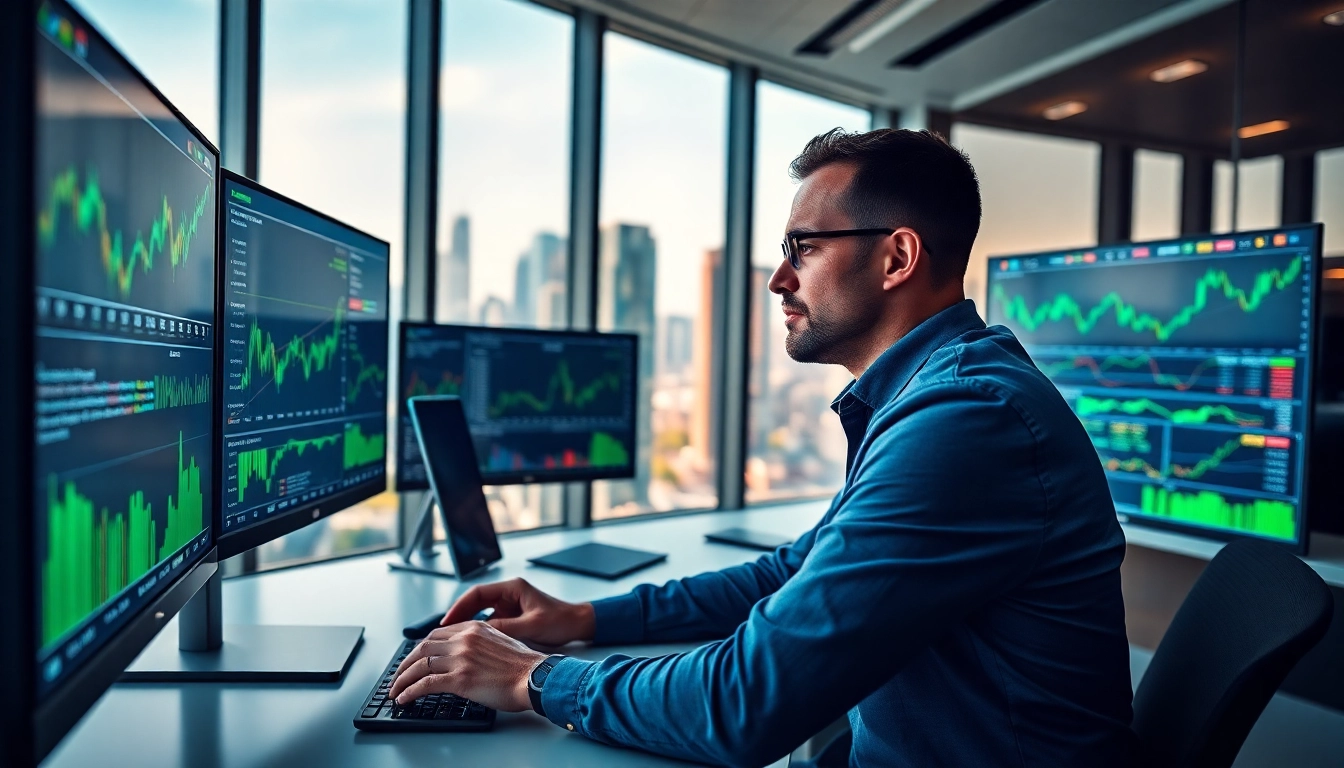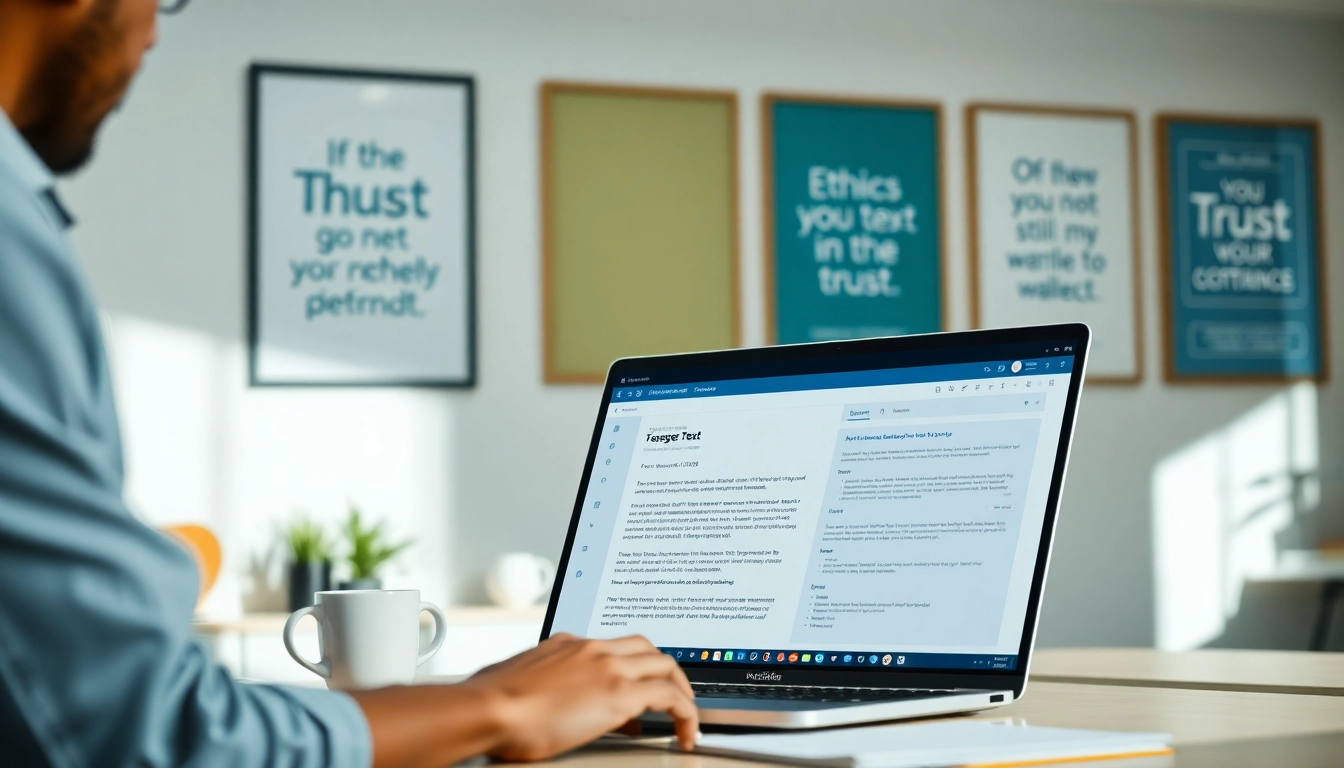
Understanding Trade Futures Basics
Trade futures represent a pivotal element in the landscape of financial markets, acting as instruments that facilitate speculation and hedging in various assets. In this deep dive, we will unravel the core concepts surrounding trade futures, particularly focusing on their operational framework and significance in modern finance. For anyone interested in engaging with trade futures, understanding these foundational aspects is essential.
What Are Trade Futures?
Futures contracts are standardized agreements to buy or sell an asset at a predetermined price on a specified future date. Unlike traditional stock trading, where shares represent ownership in a company, futures trading is contingent on the future value of a product, commodity, or financial instrument. The assets traded can range from cryptocurrencies, oil, and agricultural products to stock indices and even foreign currencies. The ability to lock in prices for future transactions offers both a safeguard against potential losses in volatile markets and an avenue for speculative profits.
The Role of Futures in Financial Markets
Futures play a crucial role in providing market stability and liquidity. They serve two primary purposes: hedging and speculation. Hedging allows producers and consumers to protect against adverse price fluctuations; for example, farmers can lock in prices for their crops before the harvest, safeguarding against market downturns. Conversely, speculators aim to profit from price movements, often leading to increased market activity. This speculation can create price discovery—an essential function where prices reflect supply and demand factors accurately.
Key Terminology in Trade Futures
To navigate the futures market effectively, one must become familiar with several key terms:
- Contract Size: This refers to the quantity of the underlying asset represented by one futures contract.
- Expiration Date: The last day on which the contract can be settled.
- Margin: The minimum amount of capital required to open a futures position.
- Leverage: Utilizing borrowed capital to increase potential returns, inherent in trading futures.
- Closing a Position: The act of completing a transaction by either selling or buying back a futures contract.
Benefits of Trading Futures
Leverage in Trade Futures Transactions
One of the most compelling advantages of trading futures is the leverage it offers. Traders can control a considerable amount of the underlying asset with a relatively small capital outlay. For example, if the margin requirement is 10%, a trader can control $100,000 worth of assets by putting down only $10,000. This potent leverage means on one side, the potential rewards can be significant; however, it also amplifies the risks. Therefore, successful futures trading requires careful risk management strategies to avoid high losses.
Diversification Opportunities with Futures
Futures contracts are available for a wide range of asset classes, enabling traders to diversify their portfolios significantly. By including commodities, currencies, and indices in their investment strategies, traders can hedge against market volatility. For instance, an investor primarily focused on technology stocks might consider futures contracts on oil to offset potential downturns in the tech sector, thus creating a more resilient portfolio. Diversifying through futures can lead to balanced risk exposure and enhanced returns over time.
Risk Management Strategies
In the inherently volatile environment of futures trading, effective risk management is paramount. Traders typically utilize several strategies:
- Stop-Loss Orders: Setting predetermined levels to automatically close a position if it reaches a certain loss threshold.
- Position Sizing: Determining the correct amount of capital to invest in each trade based on overall account size and risk appetite.
- Hedging with Options: Using options contracts alongside futures can provide additional insurance against adverse price movements.
- Regular Reassessment: Continuously evaluating market conditions and adjusting strategies as necessary ensures adaptability in dynamic environments.
Setting Up for Success in Futures Trading
Choosing the Right Brokerage for Trade Futures
When venturing into trade futures, selecting an appropriate brokerage is among the key steps to ensure success. Factors to consider include:
- Fees and Commissions: Look for competitive rates, as trading frequently can lead to significant costs.
- Trading Platform: Ensure the platform is robust, user-friendly, and supports technical analysis tools.
- Regulation and Security: Choose a broker that is regulated by recognized regulatory bodies to ensure your investments are protected.
- Customer Service: Reliable support is essential, especially when managing trades or addressing issues quickly.
Essential Tools and Resources for Traders
The right tools and resources can enhance your futures trading experience significantly. Essential tools include:
- Charting Software: Software that enables traders to analyze price trends and patterns visually.
- News Services: Real-time market news can impact futures prices quickly; being informed helps traders react promptly.
- Educational Resources: Books, webinars, and courses that provide deeper insight into trading strategies and market analysis.
Understanding the Margin Requirements
Margin requirements are a fundamental aspect of futures trading, as they dictate the minimum amount of collateral a trader must deposit to open a position. Margin is categorized into two types:
- Initial Margin: The amount required to establish a new position.
- Maintenance Margin: The minimum equity amount a trader must maintain in their account to keep an open position.
Understanding these requirements and calculating the potential profit or loss based on moves in the underlying asset price can inform more strategic trading decisions.
Common Challenges in Trade Futures
Coping with Market Volatility
Market volatility is a double-edged sword in futures trading; while it presents opportunities, it can also lead to significant losses. Traders should employ strategies for managing volatility, which may include diversifying asset classes and utilizing options as a hedge. Keeping abreast of global events that might affect markets is crucial in anticipating volatility shifts.
Recognizing Psychological Barriers in Trading
The psychological aspects of trading can significantly affect outcomes; managing emotions such as fear and greed is crucial. Many traders experience psychological barriers that result in poor decision-making, such as hesitating to act on well-researched strategies due to fear of loss or holding onto losing positions due to a fear of realizing losses. Building a psychological routine, such as maintaining a trading journal to log decisions, can help traders reflect on their actions and manage their mentality.
Overcoming Knowledge Gaps in Futures Trading
Many new traders encounter gaps in their knowledge that can hinder their success. It is crucial to engage in continuous education through books, online courses, and mentorship programs. Joining trading forums or groups can also facilitate knowledge sharing among traders, enabling beginners to learn from experienced professionals and gain insights into best practices, overcome challenges, and understand advanced strategies.
Advanced Strategies for Trade Futures
Technical Analysis Techniques for Traders
Technical analysis is one of the core pillars of futures trading, where traders study price charts and use various indicators to predict future price movements. Common techniques include:
- Trend Lines: Drawing lines to identify the direction of the market, which can help traders make entry or exit decisions.
- Moving Averages: Utilizing different periods to determine if an asset is trending up or down and to identify potential reversals.
- Volume Analysis: Analyzing trading volume in conjunction with price changes to validate trends and identify potential breakout points.
Fundamental Analysis in Futures Markets
While technical analysis focuses on price movements, fundamental analysis delves into the underlying factors influencing those movements. Economic indicators, such as employment rates, inflation, and geopolitical events, play significant roles in the futures markets. For instance, shifts in global oil supply driven by political unrest can create ripples in oil futures prices. Thus, staying informed about macroeconomic trends is vital for making informed trading decisions.
Measuring Performance in Trade Futures Transactions
Evaluating the performance of futures trades is essential for ongoing improvement. Traders should analyze metrics such as:
- Win-Loss Ratio: This represents the percentage of winning trades relative to losing trades.
- Return on Investment (ROI): Assessing how much profit has been made relative to the total investment in futures contracts over a period.
- Maximum Drawdown: Determining the maximum observed loss from a peak to a trough, which provides insights into a trader’s risk exposure.
Utilizing performance metrics allows traders to refine their strategies continually and adapt to evolving market conditions.







